 W
WSateen Jo Aastan is located on the left bank of the Indus River near Rohri, Sindh, Pakistan.
 W
WAjrak, also known as Ajrakh is a unique form of blockprinting found in Sindh, Pakistan; Kutch, Gujarat; and Barmer, Rajasthan in India. These shawls display special designs and patterns made using block printing by stamps. Over the years, ajraks have become a symbol of the Sindhi culture and traditions. Ajrak print is also famous in neighbouring areas of India in the states of Rajasthan and Gujarat due to their influence from Indus Valley Civilization in Sindh, Pakistan.
 W
WCharpai, Charpaya, Charpoy, Khat or Manji is a traditional woven bed used across South Asia. Regional variations are found in Afghanistan and Pakistan, North and Central India, Bihar and Myanmar. It is also known as khaat, khatia, or manji, and as manjaa in Punjab.
 W
WPakistani cuisine can be characterized by a blend of various regional cooking traditions from the Indian subcontinent, Central and Western Asia, as well as elements from its Mughal legacy. The country's various cuisines are derived from its ethnic and cultural diversity.
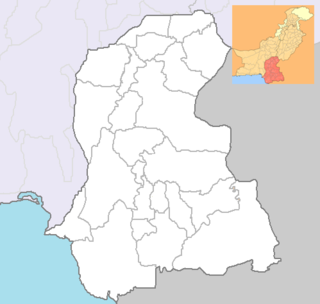 W
WThe Culture of Sindh has its roots in the Indus Valley Civilization. Sindh has been shaped by the largely desert region, the natural resources it had available, and continuous foreign influence. The Indus or Sindhu River that passes through the land, and the Arabian Sea also supported the seafaring traditions among the local people. The local climate also reflects why the Sindhis have the language, folklore, traditions, customs and lifestyle that are so different from the neighboring regions. The Sindhi culture is also practiced by the Sindhi diaspora.
 W
WDalit feminism is a feminist perspective that includes questioning caste and gender roles among the Dalit population and within feminism and the larger women's movement. Dalit women primarily live in South Asia, mainly in Bangladesh, India, Nepal, Pakistan and Sri Lanka. Dalit women face different challenges than women in higher castes in these countries. They are more likely to be poor, uneducated and socially marginalized. Dalit feminists advocate and have advocated for equal rights for Dalit women based on gender, caste and other issues. They have addressed conferences, created organizations and helped elect other Dalit women into political office.
 W
WDesi are the people, cultures, and products of the Indian subcontinent and their diaspora, derived from Sanskrit देश (deśá), meaning "land, country". Although "desi" is sometimes viewed as a loose term, and countries that are considered "desi" are subjective, it is accepted that Desi traces its origin specifically to the people of countries of India, Pakistan and Bangladesh.
 W
WGilgit-Baltistan is inherited by people from different sects and they have a diversity of their culture, customs and traditions. The cultural heritage of Gilgit-Baltistan, Pakistan manifests itself in local traditions, music and local dress.
 W
WGlacier growing, artificial glaciation or glacier grafting, is a practice carried out in the Hindu Kush and Himalaya regions aimed at creating small new glaciers to increase water supply for crops and in some cases to sustain micro hydro power. In order to encourage the growth of a glacier local farmers acquire ice from naturally occurring glaciers, and carry it to high altitude areas where the ice is put inside a small cave dug out in a scree-slope. Along with the ice other ingredients such as water, salt, sawdust, wheat husks and charcoal are also placed at the site. The use of glacier grafting is an old skill of the mountain farmers of Baltistan and Gilgit, where it is used for irrigation purposes since at least the 19th century. This technique was described by Lieutenant David Lockhart Robertson Lorimer (1876–1962) in the 1920s. Allegedly glacier grafting also has been used to block mountain passes.
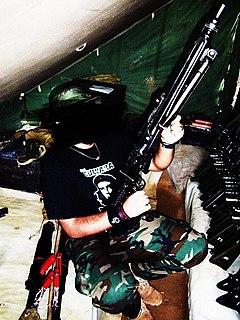 W
WGun laws in Pakistan allow for the wide ownership of firearms. Only tribal areas of the province of Khyber Pakhtunkhwa permits the ownership of heavy weaponry including the use of rocket-propelled grenades, short, medium, and long-range rockets, anti-aircraft guns, mortars, etc. These heavy weapons may be made in Pakistan.
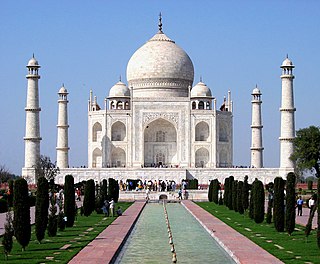 W
WIndo-Persian culture refers to a cultural synthesis present in the Indian subcontinent, characterized by the absorption or integration of Persian aspects into the various cultures of Pakistan, India and Bangladesh. The first large-scale introduction of Persian influence and culture to the Indian subcontinent was by Muslim rulers of Turkic and Afghan origin with Persianate societies and Persianized cultures. This socio-cultural synthesis arose steadily through the Delhi Sultanate from the 13th to 16th centuries, and the Mughal Empire from then onwards until the 19th century. Various Muslim Turko-Persian rulers, such as the 11th-century Sultan Mahmud Ghaznavi, rapidly pushed for the heavy Persianization of conquered territories in northwestern India, where Islamic influence was also firmly established.
 W
WKashmiri handicrafts is a traditional art of Kashmiri people and artisans who make, craft, and decorate objects by hand. Srinagar, Ganderbal, and Budgam are the main districts in central Kashmir which are making handicrafts products since ages. The rest of its districts, including Srinagar, Ganderbal, and Budgam are best known for its cultural heritage which extends handicraft industry in the state of Jammu and Kashmir, India.
 W
WA kulhar or kulhad, sometimes called a shikora, is a traditional handle-less clay cup from India and Pakistan that is typically unpainted and unglazed, and meant to be disposable. The most interesting feature of kulhar is not being painted and that differentiates a kulhar from a terra-cotta cup. The kulhar cup is unglazed inside out. Since kulhars are made by firing in a kiln and are almost never reused, they are inherently sterile and hygienic. Bazaars and food stalls in the Indian subcontinent traditionally served hot beverages, such as tea, in kuhlars, which suffused the beverage with an "earthy aroma" that was often considered appealing. Yoghurt, hot milk with sugar as well as some regional desserts, such as kulfi, are also served in kulhars. Kulhars have gradually given way to polystyrene and coated paper cups, because the latter are lighter to carry in bulk and cheaper.
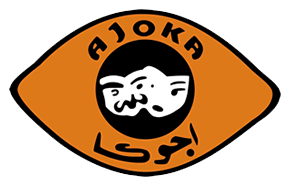 W
WAjoka Theatre is a Pakistani not-for-profit arts organization based in Lahore, Punjab, with focus on producing and performing social theatrical stage productions, founded in 1984. The group was formed by director, actress and playwright, Madeeha Gauhar at peak of the tensions during the state of emergency under the regime of General Muhammad Zia-ul-Haq. Ajoka Theatre received the prestigious Prince Claus Award in 2006 and the International Theatre Pasta Award in 2007.
 W
WThe culture of Lahori People is a manifestation of the lifestyle, festivals, literature, music, language, politics, cuisine and socio-economic conditions of its people. It is characterised by the blending of South Asian, Middle Eastern, Central Asian and Western influences.
 W
WIndependent Theatre Pakistan is a Pakistani theatre company and performing arts organization based in Lahore, Punjab, established in March 2012. The group is directed by founder, writer and director Azeem Hamid. It is the youngest theatre company in continuous production to have performed both internationally and domestically from Pakistan. Since their inception, the group has performed over twenty-five theatrical productions.
 W
WPunjab Lok Rahs started working as an independent alternative theater group in 1986. The group has seen a number of upheavals both internal and external during its history. On average, the group has held a performance every fortnight since its creation.
 W
WIn the South Asian subcontinent, mannat is a wish that one desires to come to fruition and the vow one makes to God after his/her wish comes true.
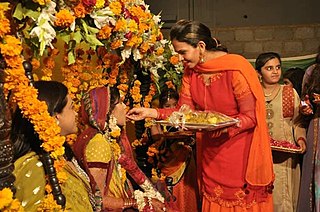 W
WMarriage in Pakistan pertains to wedding traditions established and adhered by Pakistani men and women. Despite their local and regional variations, marriages in Pakistan generally follow Islamic marital jurisprudence. Culturally, marriages are not only seen as a union between a husband and a wife, but also an alliance between their respective families. These traditions extend to other countries around in the world where Overseas Pakistani communities exist.
 W
WMushaira is a poetic symposium. It is an event where poets gather to perform their works. A mushaira is part of the Culture of North India, Pakistan and the Deccan, particularly among the Hyderabadi Muslims, and it regarded as a forum for free self-expression.
 W
WPaan is a preparation combining betel leaf with areca nut widely consumed throughout Southeast Asia, South Asia and East Asia. It is chewed for its stimulant effects. After chewing, it is either spat out or swallowed. Paan has many variations. Slaked lime (chuna) paste is commonly added to bind the leaves. Some preparations in the Bengali subcontinent include katha paste or mukhwas to freshen the breath.
 W
WPakistani craft has a long tradition and history. It is a traditional work or art of Pakistani people to produce, design or shape objects by using simple tools or simply by hand. It is generally produced by an individual, group or independent artists, and while it is an ancient custom, artists process traditional craft material such as brass, wood, clay, textiles, paper, or other embroidery material to create handmade items. Stone carving, sandstone, onyx, metalwork, pottery, and ajraks are commonly used techniques and materials to work upon handicrafts.
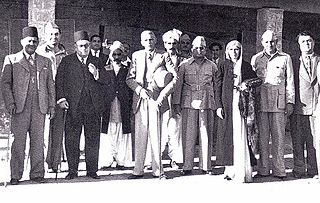 W
WThe Pakistani philosophy is the philosophical activity or the philosophical academic output both within Pakistan and abroad. It encompasses the history of philosophy in the state of Pakistan, and its relations with nature, science, logic, culture, religion, and politics since its establishment on August 1947.
 W
WPati Parmeshwar, also called Majazi Khuda, is a concept in South Asia that teaches that the husband is akin to a deity, being next to God. This teaching of Pati Parmeshwar or Majazi Khuda holds that it is the husband's role to provide for his wife. Indian and Pakistani women thus regularly pray and fast for their husband. For a South Asian married couple, the husband is viewed by his wife as an aid in her eventual salvation with respect to the afterlife. The concept of Pati Parmeshwar or Majazi Khuda originates in Hinduism, though it has been adopted by many practitioners of Islam in the Indian subcontinent.
 W
WThe Punjabi ghagra is a four-piece outfit known as tewar or 'ti-or' which was traditionally worn by Punjabi women throughout the Punjab region with the outfit comprising a head scarf (Phulkari), kurta or kurti, ghagra and either a suthan or the Punjabi salwar. In modern times, the ghagra is worn by women in parts of Haryana, rural parts of south West Punjab, parts of Himachal Pradesh and during performances of Giddha in East Punjab.
 W
WQawwali is a form of Sufi Islamic devotional singing, originating from the Indian subcontinent, and notably popular in the Punjab and Sindh regions of Pakistan; in Hyderabad, Delhi and other parts of India, especially North India; as well as the Dhaka and Chittagong Divisions of Bangladesh.
 W
WRanigat is a collection of 2nd century CE Buddhist ruins spread over an area of 4 square kilometers which dates from the Gandhara civilization. Ranigat is located in valley Buner of Pakistan's Khyber Pakhtunkhwa province.
 W
WRasam Pagri is a social ceremony, prevalent in Punjab and Rajasthanis (Marwaris) in the Indian subcontinent. The ceremony is conducted upon the death of the eldest male member in a family, in which the eldest surviving male member of the family ties a turban (pagri) on his head in the presence of the extended family or clan. According to the Hindu traditions, the ceremony is usually performed by the father of the wife of the eldest, surviving male member. The ceremony usually takes place on the fourth day from the day of funeral rites, or on the thirteenth day, Tehravin. The turban signifies honor of the family, and the ceremony signifies the transition of responsibility for the protection and welfare of the family from the deceased to the surviving oldest male member.
 W
WThe Punjabi Salwar is part of the Punjabi suit which is the traditional attire of the Punjab region of the Indian subcontinent. It is known for its lively hues, rich fabrics, and embroidery. The suit features three items - a kameez (top), salwar (bottom) and dupatta (scarf). The women's Punjabi salwar suit style has become popular all over the sub-continent and beyond reaching even the remote parts of Ladakh. It is also the national dress of Pakistan, since the later 1960s with the Punjabi salwar being used in government offices.
 W
WSaraiki ajraks have become a symbol of the Saraiki culture and traditions. On 6 March, Saraiki Ajrak Day is celebrated. Ajrak is a name given to a unique form of blockprinted shawls and tiles found in the Saraiki belt of southern Punjab in Pakistan. These shawls display special designs and patterns made using block printing by stamps. Common colours used while making these patterns may include but are not limited to blue, red, black, yellow and green۔ Dark blue colour is the dominated one in the saraiki culture. Saraiki Ajrak is dark blue. The blue colour makes it distinctive among other ajraks. Saraiki nationalists designed the Saraiki Ajrak. Nationalists captured the heart of Saraiki belt, which Saraikies are proud on. The Sindhi Ajrak was used long ago. Some people call it sajrk, but the majority know the name of the "Saraiki ajrak".
 W
WSnake charming is the practice of appearing to hypnotize a snake by playing and waving around an instrument called a pungi. A typical performance may also include handling the snakes or performing other seemingly dangerous acts, as well as other street performance staples, like juggling and sleight of hand. The practice was historically the profession of some tribesmen in India but this is no longer the case. Snake-charmer performances still happen in other Asian nations such as Pakistan. Bangladesh, Sri Lanka and south-east Asian nations like Thailand and Malaysia are also home to performers, as are the North African countries of Egypt, Morocco and Tunisia.
 W
WIn many cultures there is a tradition of removing one's shoes in the home and places like church, temples and schools.
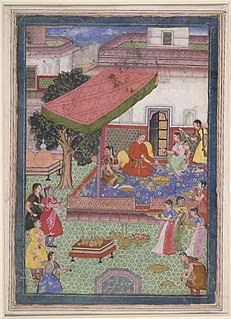 W
WZenana literally meaning "of the women" or "pertaining to women," in Persian language contextually refers to the part of a house belonging to a Hindu or Muslim family in the Indian subcontinent which is reserved for the women of the household. The zenana are the inner apartments of a house in which the women of the family live. The outer apartments for guests and men are called the mardana. Conceptually in those that practise purdah, it is the equivalent in the Indian subcontinent of the harem.